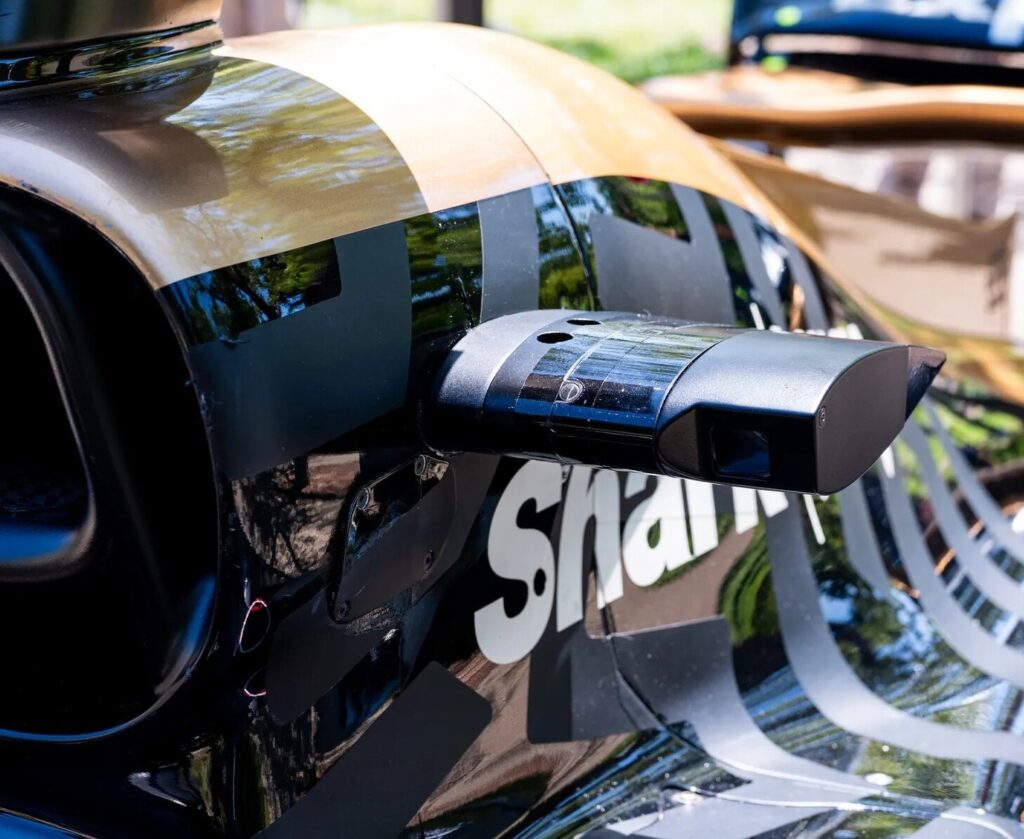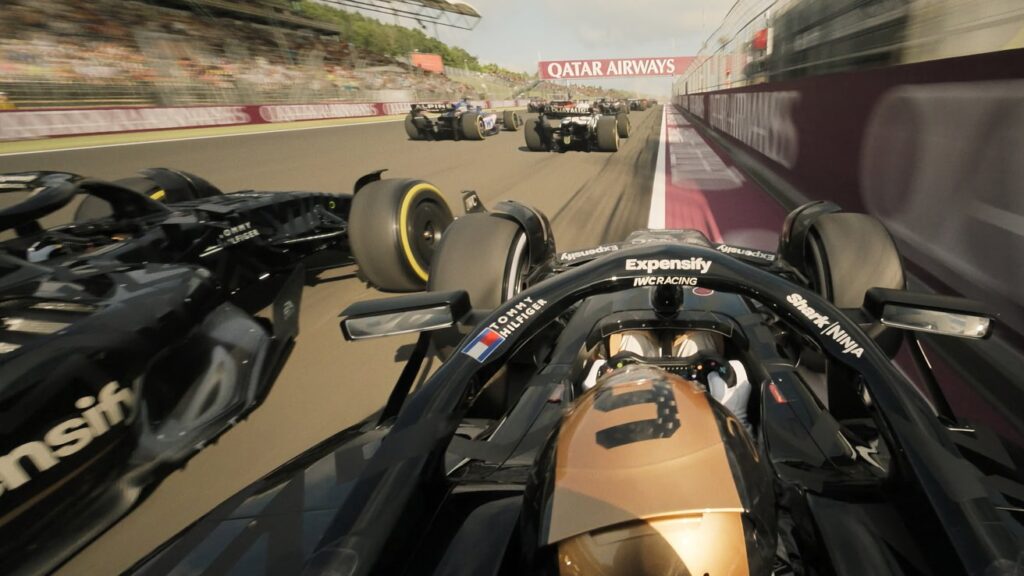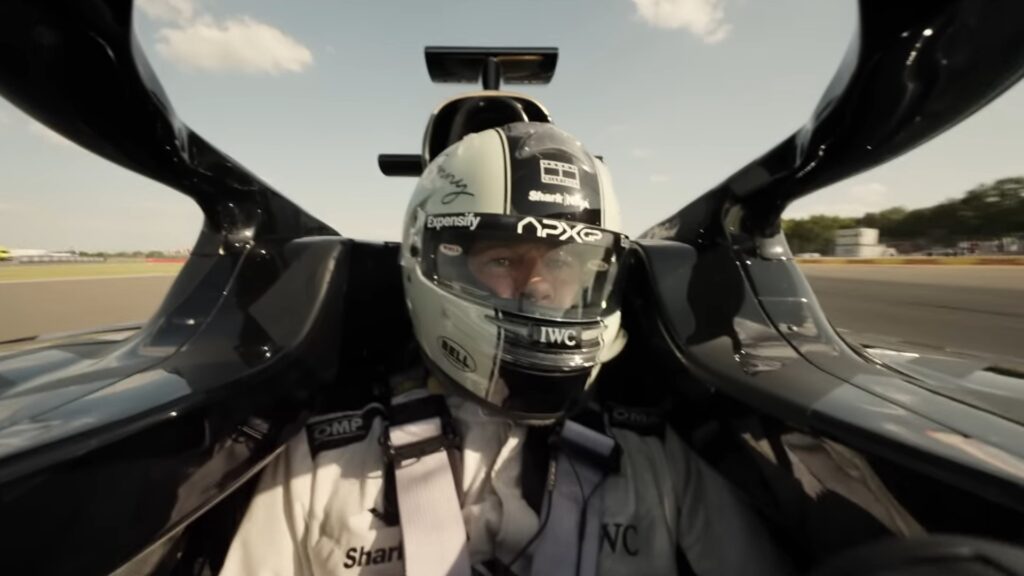We are mad for mobile movies here at the Dublin Smartphone Film Festival. The more productions use them the more it proves our point about accessible filmmaking. Now with F1, Apple’s foray into cinema just hit the apex of innovation: the tech giant didn’t merely supply iPhones—it reimagined them. Ditching bulky cinema rigs, Apple’s engineers built a bespoke camera module from iPhone components—complete with a cutting-edge A-series chip and a high-resolution sensor—that strap directly into Formula One cars, capturing heart-pounding point-of-view footage in real races.
More Days of Thunder: The Birth of F1 the movie
The movie, directed by Joseph Kosinski and produced by Jerry Bruckheimer of Top Gun Maverick Fame. The movie stars Brad Pitt as a retired racing legend mentoring a hot-shot newcomer, played by Damson Idris. Real F1 maestro Lewis Hamilton serves as producer, ensuring every downshift rings true. Filming took place at Grand Prix venues from Abu Dhabi to Mexico City, with Pitt and Idris behind the wheel of real race cars—no CGI stand-ins here
Why Broadcast Cameras Just Wouldn’t Cut It
Traditional onboard cameras used in F1 broadcasts are optimised for live TV: compact, robust, but limited in dynamic range and resolution. For a cinematic release, these specs fall flat—literally. At blistering speeds and under searing sun, the filmmakers needed something with higher resolution that could stand up to the dangers of F1 racing. Apple’s solution? Strip down an iPhone, supercharge its internals, and pack it into a form factor that meets F1’s rigorous design and weight tolerances

Custom iPhone Module
At the heart of the module lies the same 48-megapixel sensor rumored to be in the iPhone 15 Pro’s ultra-wide camera, tethered to an A17 Pro-class chipset for real-time processing. A neutral-density filter cap sits over the lens to tame highlights on sunlit straights, while an iPhone battery nestles inside for power. All this hardware is married to custom firmware—running on an iOS core—that logs footage in Apple’s ProRes Log format, primed for ACES-compliant color grading in post

The IPAD Pit Crew
Beyond raw hardware, Apple developed a companion iPad app that hooks up via USB-C to the module. From here, filmmakers can tweak frame rate, shutter angle, ISO, and white balance on the fly—no pit stop required. Need to hit record as you blast through Turn 1? Tap the iPad. Pause recording mid-lap? Easy. This direct-control workflow, synchronized with ProRes Log encoding, gives DPs unprecedented creative freedom atop 200 mph thrills
Tested to the Limit
Squeezing smartphone guts into an F1-grade package meant engineering for extremes. Apple’s test rigs subjected the module to prolonged heat cycles, seven-figure G-forces, and bone-rattling vibrations that would shatter any consumer device. The end result passed Formula One’s stringent durability benchmarks, proving that an “iPhone cam” could withstand race-day chaos without skipping a frame.

A New Chapter for iPhone Cinematography
The custom F1 camera didn’t stop at one-off hardware. The development process birthed two major firmware features now rolling out to iPhone 15 Pro users: native Log encoding for ProRes capture, and support for ACES color workflows. In other words, indie filmmakers can now shoot Log-format video on their phones and grade it alongside big-budget studio footage. Apple’s gamble here lays the groundwork for a democratized filmmaking future
Beyond the Finish Line
Apple’s F1 project is more than a flashy marketing campaign—it’s a statement of intent. By fusing smartphone innovation with Hollywood storytelling, Apple is signaling a shift: consumer tech can drive professional artistry, not just consumer convenience. If F1 delivers on its promise of full-throttle authenticity, expect more blockbusters to trade traditional cinema rigs for pocket-sized powerhouses. Ready for Apple’s next act? It’s not just on stage—it’s screaming down the track at 220 mph.



